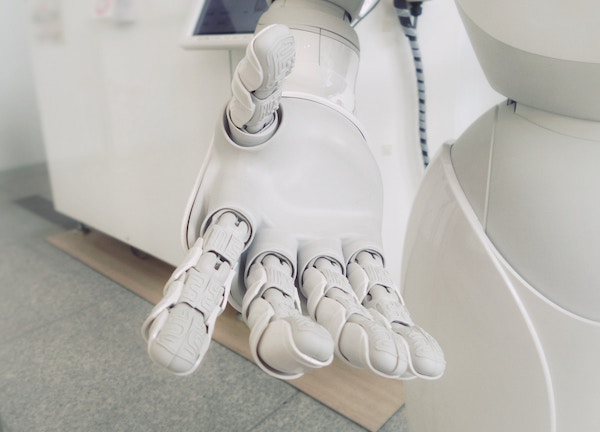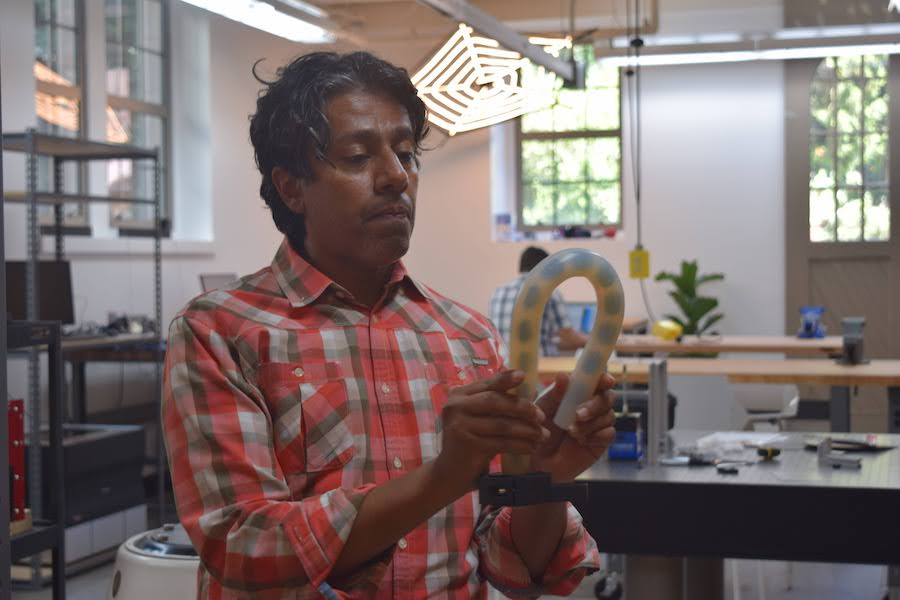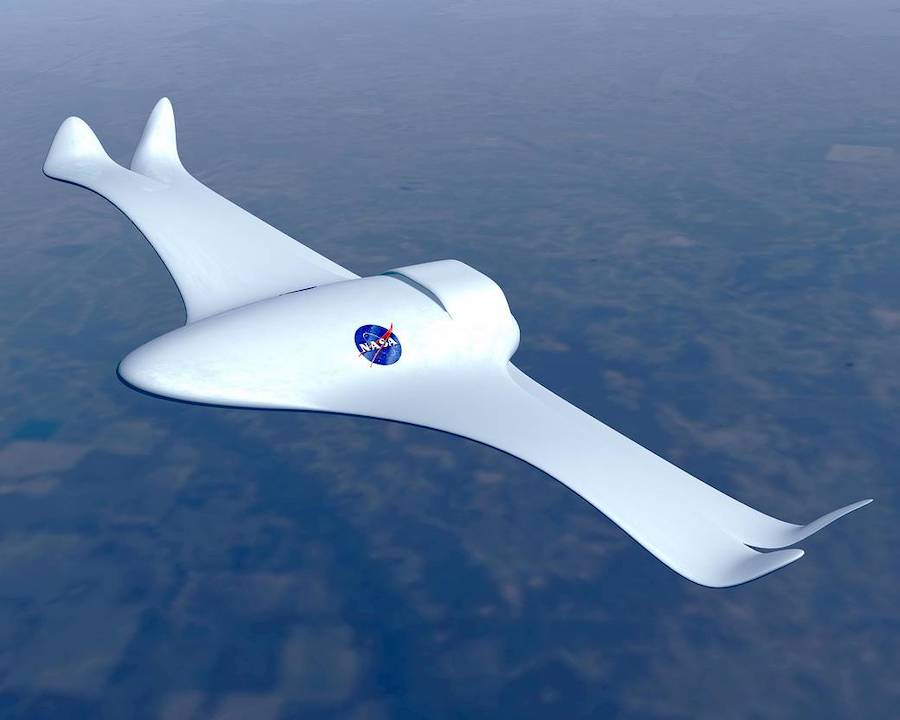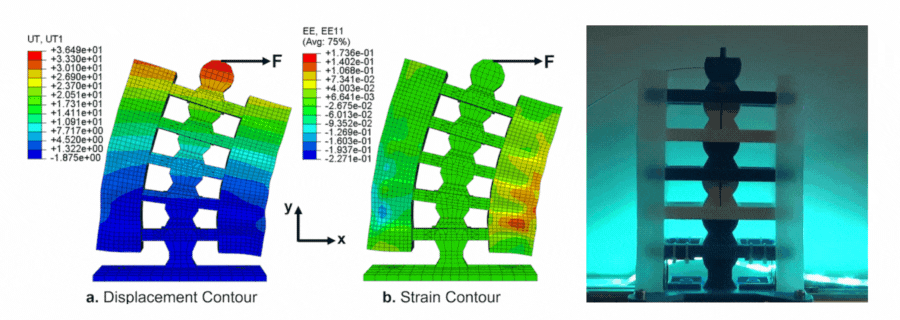Amy Sprague
April 10, 2023
Adding soft actuation to rigid structures yields many key aerospace benefits, including strength, flexibility and efficiency.

A robotic hand combining rigid structures with soft actuators. Photo credit: Possessed Photography on Unsplash.
.
A&A’s Illimited Lab looks like it’s been misplaced by the UW Biology Department. Vertebrae models of sea birds and snakes fill shelves and cover workbenches. PhD students Bart Boom and Thijs Masmeijer find their inspiration here for engineering strategies to produce stronger, more flexible and efficient structures for robotic systems. Specifically, they are looking at how bones and muscles work together to minimize the energy required for actuation.
Bones provide structure, strength, and protection, and muscles provide power through contraction and relaxation. With their combined efforts, muscle and bones together provide more stable, flexible, efficient movement.
“We started thinking about how to replicate a musculoskeletal system because vertebrates have strength, power and flexibility which is a great combination in engineering.”
Together with Assistant Professor Ed Habtour, master’s student Spencer Flint and recent undergraduate Aidan Sleavin (A&A ‘22), Boom and Masmeijer 3D-printed an imitation of this great combo with plastic “bones” and soft polymer “muscles” resembling human or snake vertebrae.

A snake’s musculoskeletal system gives inspiration to structures incorporating soft actuators.
Why snakes?
Snakes are of particular interest because of their unique and advantageous biology. Habtour says, “Snakes are extremely flexible with a high range of motion. They are also very powerful for their size. They are remarkably fast, especially considering they don’t have legs. And they use their skeletons and musculature as they undulate to store and release energy with extremely high efficiency.”

Assistant Professor Ed Habtour with a model simulating muscle and bone characteristics of a sea bird’s neck. Photo credit: Kenn Curry.
It is the undulation, in alternating segments of energy storage and release, that provides a biological model for a series of multi-point soft actuators. To test the increased efficiency of this kind of soft actuation, the researchers activated their prototype of opposing soft actuators and measured the amount of force required to activate it and how efficiently it returned to its original position. They reported their findings with recent University of Groningen master’s graduate Pieter Wiersinga, in a recent paper published in Micromachines.
The testing showed that adding a system of opposing soft actuators increases the flexibility and the range of motion and acts as a distributive actuator - one force activates the entire soft polymer chain.
Boom says, “When soft actuators are part of the system, you store energy into the system when reaching extremes, this will increase the passive stability of the system.” Masmeijer adds, “Our most surprising finding was that soft actuators add both stiffness and damping.” Generally in structures, damping decreases when stiffness increases.

Left: A&A Ph.D. student Bart Boom, with Thijs Masmeijer (left) and Spencer Flint (right), demonstrates one of the lab’s models of vertebrae-inspired structure with a soft distributive actuator. Center: A closer view of the model. Right: Masmeijer shows off an electromagnetic shaker, one of the tools in the lab to determine dynamic properties of structures. Photo credits: Kenn Curry.
Advancing soft actuation
Adding muscle-like soft actuators to structures produces many advantages. Habtour explains, “While rigid-only structures have stability, they don’t have a high range of motion or they require a lot of separate parts to achieve that. Each of those parts also requires discrete, localized actuation which is slow and inefficient. And these rigid parts generally wear out fairly quickly.”

An artist's rendering shows advanced concepts NASA envisions for an aircraft of the future. Called the 21st Century Aerospace Vehicle, and sometimes nicknamed the Morphing Airplane, the concept includes a variety of smart technologies that could enable in-flight configuration changes for optimum flight characteristics. Photo credit: NASA.
For applications such as aviation and robotics, structures with soft actuators are lightweight, can withstand extreme environmental conditions and reduce vibrations which then reduces fatigue. These complex structures show greater stability, flexibility, control, fuel efficiency and durability. Adding distributive actuation, like a snake’s vertebrae-inspired musculature, should create even higher efficiency.
Research in soft actuators is advancing faster now due to the advance in modeling techniques for complex systems. Many small segments with small degrees of freedom make up these structures, and modeling can now predict how they will behave.
For now, much of this research is going into drones or robots that can grasp. Looking forward, airplane components like wings, flaps, and landing gear are good candidates for soft actuators to provide more responsiveness and greater maneuverability along with a smoother ride. As Masmeijer sums it up, “It’s just good design.”

Displacement and strain contours due to an applied load at the top (F). The strain is highest in the hyperelastic materials between the rigid segments (ribs), where energy is stored.
For more technical information, access Hybrid Compliant Musculoskeletal System for Fast Actuation in Robots in Micromachines 2022 by Pieter Wiersinga, Aidan Sleavin (A&A ‘22), Bart Boom, Thijs Masmeijer, Spencer Flint, and Ed Habtour.